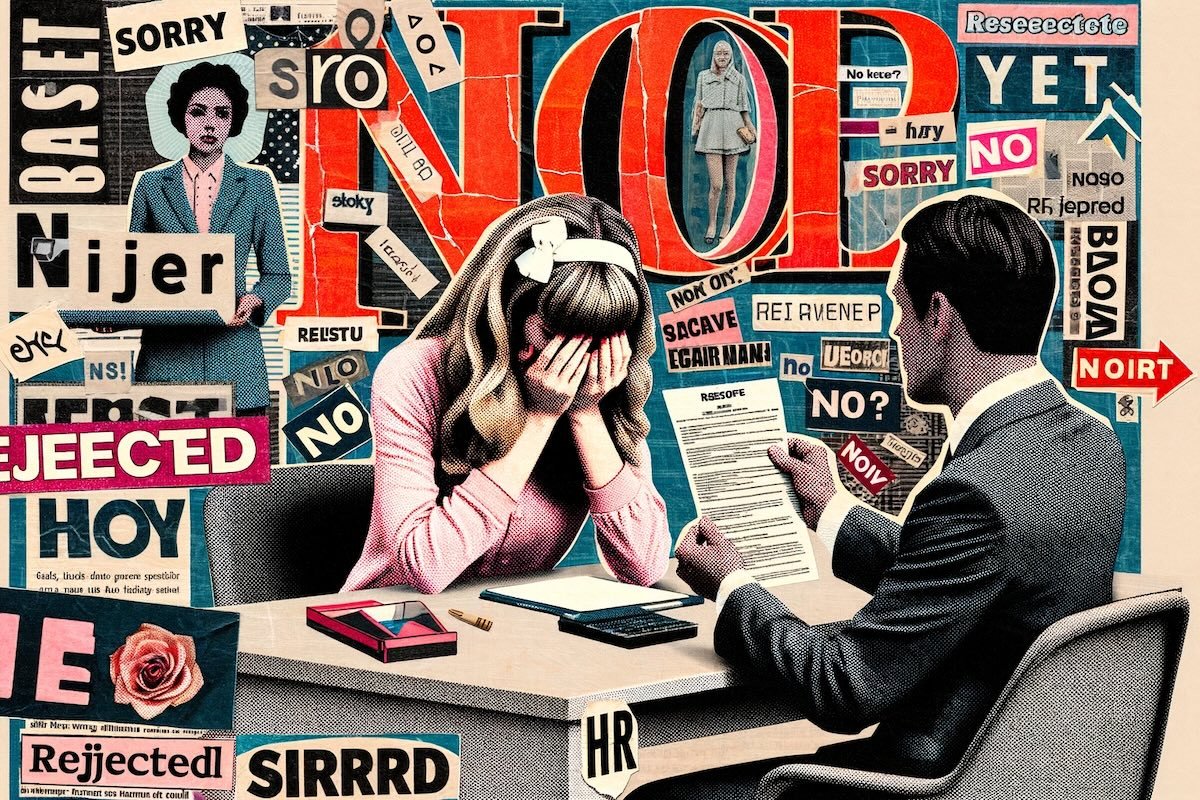Before writing any piece of important content, we create an outline, which is exactly what a resume outline is.
Many of us make the mistake of creating a resume without thinking, first, what should I actually
include in my resume?
What qualifications and achievements should you include? What should your resume look like? How can you make your resume stand out, especially when applying for highly competitive roles?
Why Do I Need a Resume Outline?
The short answer? You need a professional resume outline to get things going when writing or updating your resume.
The best way to get started is to create a resume outline. Do you remember drafting an outline of all the important ideas you want to include before writing a paper in college? Think of a resume outline in this way. It’s a tool you can use as a starting point for your resume.
Working on
your resume one section at a time breaks up this intimidating process by giving you the structure and guidance you need to effectively highlight your experiences, strengths, and skills.
Reminder: you want to tailor your resume to each position you apply to. While your resume outline ultimately stays the same, you may find yourself constantly editing and making changes to your content as time goes on. That’s okay.
Taking the time and effort to alter your resume based on the skills and requirements for a specific role will only increase your chances of landing an interview.
Resume Outline Examples
Here's a breakdown of some resume outline examples.
You'll see that the common format features the resume header and resume summary or objective at the top. Beneath your
resume headline, you'll list your work experience, education, skills (hard skills and soft skills) and certifications, and any additional relevant experience (volunteer work, hobbies, relevant coursework, and more.)
Before we go too much deeper, let's take a look at a resume outline template:
How to Customize Your Resume Outline
Here are a few ways to
customize your resume outline to make sure it fits your current situation and addresses the requirements needed for a certain position.
Tip 1: Choose the Right Resume Style
Your resume is usually the hiring manager’s first impression of you. Take this into consideration when designing your resume. If you’re applying to a variety of roles and companies, it may be useful to
design resumes with different styles. The content largely remains the same, but your resume layout may look different depending on the role or company.
Let’s say you are applying for both a Graphic Designer position at a startup and a Marketing Communications role at a large corporation. An aesthetically pleasing and more creative resume highlighting your design skills might help you stand out for the Graphic Designer position. On the other hand, a more traditional and simple design might appeal more to a hiring manager at a large corporation.
No matter what role you’re applying to, your resume should be easy to read with plenty of white space, well-organized so information can be found quickly with the use of headers, and crafted with basic design principles in mind. A basic resume outline is a great place to start.
Tip 2: Add or Delete Information Depending on Your Preferences
While we will discuss what to include in a typical resume outline, you might want to add or remove some information based on your own preferences. Make your resume best fit your needs, skills, and personality. For example, if you want more space to highlight your work history, you can forgo an introductory section to your resume.
Tip 3: Reorder Resume Elements if Needed
You can, and should,
reorder some of your resume outline—depending on your age, level of experience, and priorities. For example, if you’re a recent college graduate, put the education section right below your resume heading and/or introduction. We recommend keeping your work history in reverse-chronological order.
Be sure to put the information you think is most important at the top of your resume. Hiring managers don’t want to (and probably won’t) spend much time sifting through your resume if they can’t find the information they are looking for.
What to Include in a Resume Outline
Resume Heading
The
heading section of your resume includes your basic contact information: your first and last name, address (if you feel comfortable), phone number, and professional email address. You may also include links to your social media channels (especially
your LinkedIn profile), portfolio, and personal website.
As with any content on your resume, double and triple-check for
grammatical and spelling errors. Including an incomplete or invalid email address greatly diminishes your chances of moving forward and makes it harder to contact you.
Pro tip: if sending your resume virtually, link your websites directly so that hiring managers can click on these links quickly and effortlessly. This not only increases the chances of directing hiring managers to work you want to show off but also reduces the number of clicks to get there. If you decide to include any links, make sure they still work and take recruiters to the right place before submitting your resume.
Resume Headline or Introduction
A resume introduction falls under a variety of different names including your
branding statement, resume objective, career highlights, and summary statement. All of these options have the same goal—to tell the recruiter who you are, what you’re looking for, and what you’ve accomplished. Your resume introduction is a brief statement that describes who you are.
A resume introduction is a great way to let recruiters know what you are all about within seconds. If you decide to include a resume introduction, make sure it’s brief (1-2 sentences) and aligns with the job description at hand.
Pro Tip: If you are making a big career transition, returning to work after time off, or worried about a layoff, this is a great place to explain who you are, where you came from, and where you're headed!
Education
Your education section should include college, graduate school, and continuing education. Even if you've been out of school for a very long time, it's important to include your highest level of education completed. If your education section is competing for length wit work history, consider only including the most relevant education history.
A sample education section can include:
- School attended
- Degree and studies
- Graduation date (optional)
- Awards, honors, and relevant groups
If you’d like to show off your success as a student or recent graduate or quickly prove that you pass a GPA requirement, include your GPA here. Interested in adding important awards, scholarships, or classwork to your resume? The education section is highly customizable to include whatever
accomplishments you want to highlight at this point in your career.
Pro Tip: If you're deep enough in your career that you're applying for a Director-level role, prioritize work experience over education, unless you've recently completed an advanced degree relevant to your expertise.
Professional Experience
The professional experience section is arguably the most important part of your resume. This is your opportunity to explain how your recent jobs
make you a great candidate for the role. List the most recent companies and roles you’ve worked for in this section. Each position should include the company name, its location, your position title, and the dates of employment.
Once you get the basic information down, it’s time for the hard work. Each position should include 2-3 bullet points outlining your job responsibilities and what you accomplished. This is the place to include relevant keywords that match the job description.
It’s also the space to prove your capabilities and success by outlining the
quantifiable results of your actions. If you haven’t increased sales by 3000%, don’t worry. There are a few different ways to quantify your bullet points for various responsibilities.
Option 1: Range
Don’t let not knowing the exact number deter you from including quantifiable results in your bullet points. If you don’t know exactly how many emails you send a week or how many clients you see a month, give your best estimate.
- Example: Recruited 15-20 students in the first year, and increased participation by over 150% in the following year.
Option 2: Frequency
Adding how often you complete a specific task is a simple way to add some numbers to your resume and show your
time management skills.
- Example: Designed and scheduled daily social media posts using Adobe Illustrator, Canva, and Hootsuite.
Option 3: Scale
Almost all employers care deeply about their bottom line. Now is the time to show your ability to make or save money in the workplace. Multiply these actions by how frequently you do them, and add these numbers into your resume bullets.
- Example: Fundraised approximately $90,000 by presenting goals to over 20 local philanthropic organizations.
Skills, Interests, Certifications
Another way to make your resume stand out is to include a bulleted list of
relevant skills, interests, and certifications. It’s important to again review the job description when writing this section. What is the hiring manager looking for?
When thinking about which skills to include, consider both hard and soft skills. Do you have the technical skills to design marketing materials using Adobe Creative Suite? Include it. Are you an
interpersonal communicator who easily connects with clients? Definitely be sure to add this.
This is also the time to share what you like to do outside of work. What do you like to do in your free time? Adding relevant interests to your resume can help show
how your passions align with the company’s mission. These interests can also be a
great conversation starter in an interview.
Leadership and Involvement (Optional)
Adding
leadership and involvement activities to your resume is another great way to show recruiters who you are and what you value. This section is especially useful if you lack relevant professional experience in the desired field. If you’re a student, this is a great place to map out your involvement on campus and any leadership positions you’ve held in student organizations.














